Change Language
- Home
- |
- Tanzania Safari
- |
- Serengeti Migration Safari
The Great Migration, one of nature’s most spectacular events, begins in the southern Serengeti where nearly two million wildebeest gather each year. Between January and March, more than half a million calves are born, filling the plains with new life and energy. For many experienced guides, this is the most exciting season in the Serengeti—an incredible display of survival, movement, and the rhythm of nature.
The wildebeest then embark on an epic journey of nearly 800 kilometers, the largest mammal migration on earth. Their movements follow the seasonal rains and the growth of fresh grasses. During the wet season, the southern short-grass plains provide abundant food and safety for calving, but as the plains dry, the herds push westward and later north in search of greener pastures. Although the northern regions receive more rainfall, the grasses are less nutritious, so the wildebeest remain there only until the southern plains turn green again. This creates a continuous, clockwise cycle of movement—south, west, north, and back south again—driven by the need for food, water, and survival.
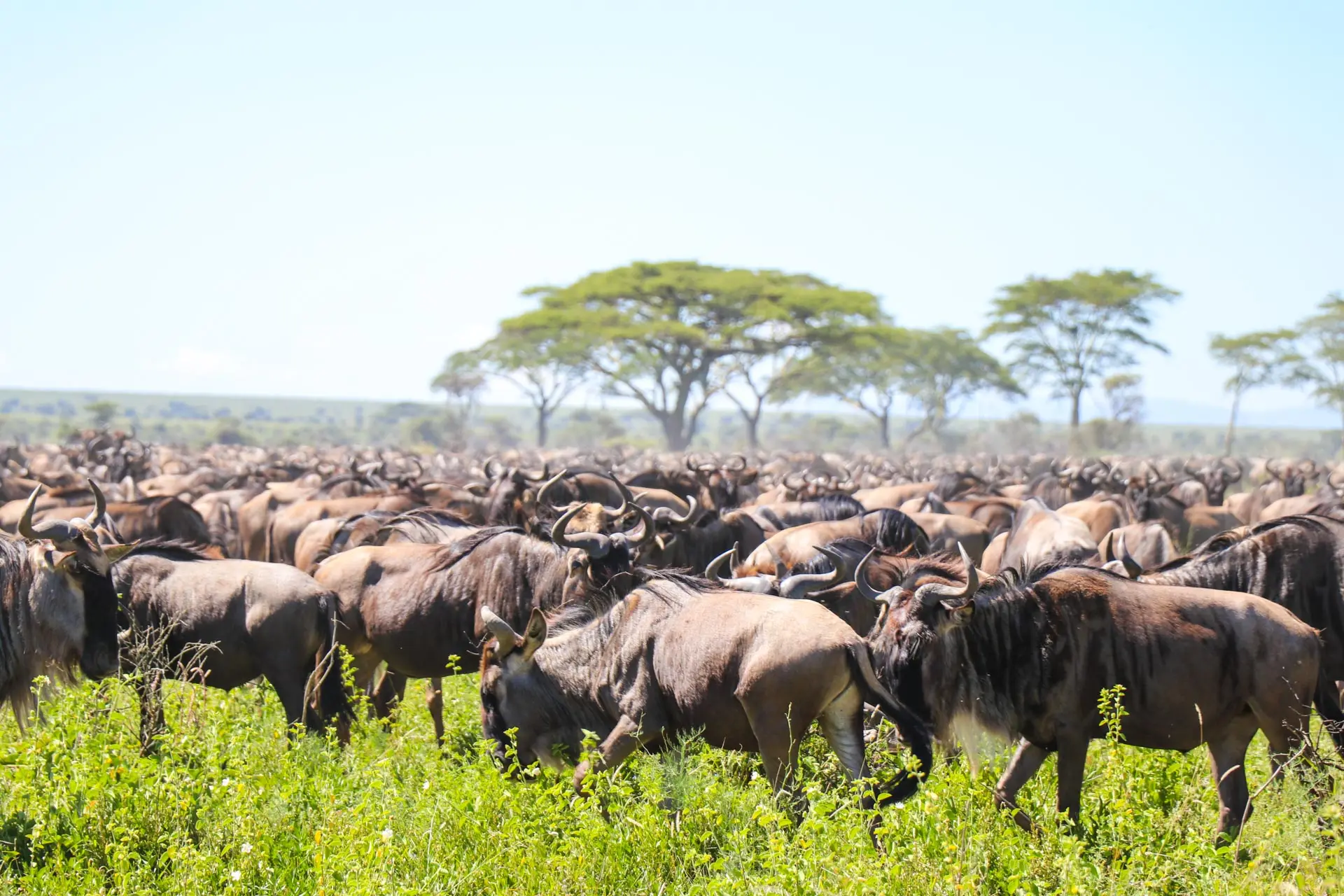
A better representation of the circle of life probably cannot be found anywhere else in the world. The journey starts in Southern Serengeti when wildebeest calves are being born. Predators like lions and hyenas are constantly hunting for babies, and thousands and thousands of calves are born within a couple weeks of each other – a feast for the eyes of true wildlife enthusiasts.
When the drought comes in May, the herd moves north, towards the Masai Mara in Kenya, chomping down the high green grass, quickly followed by the gazelles and zebras. The migration is not without risk: crossing rivers means facing about 3,000 crocodiles, patiently waiting for a kill. Not to mention the famous Serengeti lion population: by far the largest in Africa. Despite the abundance of hoofed meat in this area, life is not easy for these big cats in this unforgiving landscape. But seeing a group of lions collaborating to hunt down a wildebeest is an unforgettable sight.
Then, with the beginning of the short rains in late October, the migration makes its way back into the Serengeti. By December, the herds trek past Seronera – a small settlement in central Serengeti where the official Serengeti Visitors’ Centre is located – to return to their calving grounds again, and the circle is complete.
When planning your Serengeti safari you probably want to include seeing the Great Migration. So how do you ensure to be there when it happens? The long and short of it is that you can’t. It is important to realize that the decision of when to visit the Serengeti always involves an element of risk. We have detailed the Great Migration below, and this is what usually happens, but keep in mind that there are no guarantees.
The annual migration of two million ungulates, wildebeest but also enormous groups of zebra and Thomson’s gazelle, Grant’s gazelle and eland, through Serengeti National Park is the greatest wildlife spectacle of its type in Africa, and perhaps the world. Although variations occur from year to year, the Serengeti migration follows a reasonably predictable annual cycle, dictated by local rainfall patterns. The Great Migration cycle breaks up into the following periods:
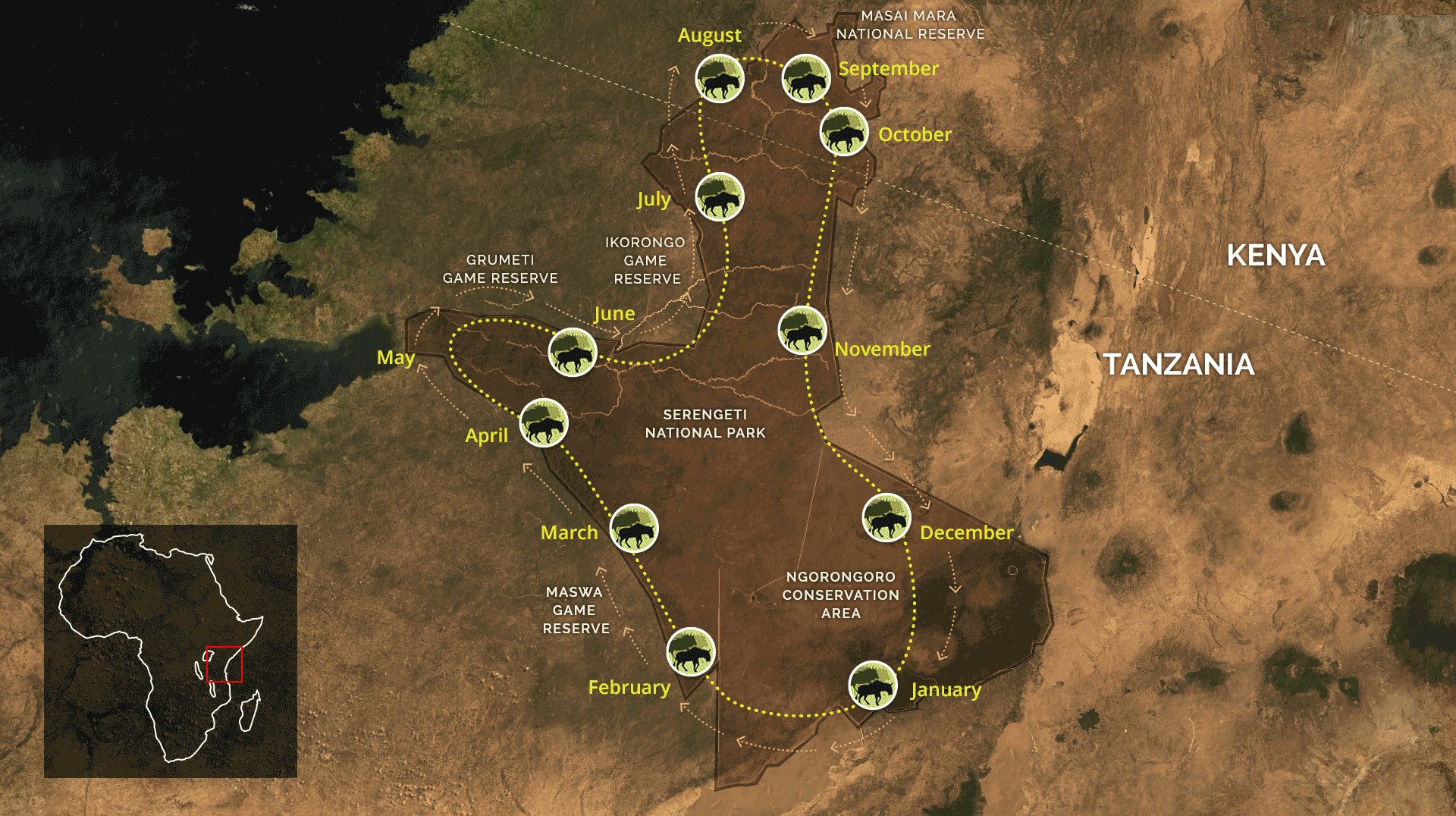
We can find the main calving grounds in the area southeast of Seronera: typical Serengeti plains stretch all the way to the Ndutu area near Ngorongoro. Triggering their move to this area are the short rains in November and December. The wildebeest stick around this area until the end of the long rains, end of April, early May. The delightful news is that this section of Serengeti National Park is easily accessible and that in this period the landscape becomes lush.
February is usually calving season in the Ndutu area and the southeastern plains: the very best time to visit this area. As wildebeest, zebra and other ungulates are so many, and give birth to so many calves, the spectacle works as a magnet for predators. As early as March or April the herd may move again in search of greener pastures. Seeing the actual migration in this period is more difficult, but chances are that you will encounter very large herds on the move.
This is the period that the wildebeest, after having feasted on the short green grasses of the southeastern Serengeti and after having giving birth to their offspring, start getting ready for their 800 kilometer long trek. The actual starting date may be anytime between late April and early June.
This is the time to you may have the privilege to see one of the greatest natural phenomena in the world: more than a million marching animals in a column up to 40 kilometers long. During the migration, the herd will move towards the Western Corridor, where they will face the first major obstacle: crossing the Grumeti River. Many animals don’t survive the crossing as they are being awaited by the area’s population of oversized crocodiles ready to feast. The herd may congregate on the southern bank of the river and stay there for up to two weeks before crossing the river.
When the Grumeti River obstacle has been taken, the herd moves further north and starts crossing the next big hurdle, the Mara River, in July or August. The Mara River crossing is where so many iconic Great Migration photos have been taken. After this crossing the herd flocks to the northwest plains and Masai Mara National Reserve in Kenya. The August – September period is considered being a bad time to visit Serengeti National Park and see the Great Migration as the herd moves into the Masai Mara in Kenya.
However, migration patterns show that about half of the herd stays on the Tanzanian side, in the Mara Serengeti area. In this period, smaller herds of wildebeest (well consider small… herds may count up to between 500 and thousands of individuals) frequently cross the Mara River, back and forth, for no apparent reason. This is an excellent time to stay at one of the Serengeti Mara camps.
Crossing the Mara River northbound means that, at one point, the herd needs to cross the river one more time before commencing the trek back in a southerly direction. This usually happens in October, but sometimes earlier. In this period the herd will cross the northern plains and Lobo area. This section of Serengeti National Park is little-visited, so if you are looking to see the migration in relative quietness, this would be the time. The wildebeest return to the short- grass plains and calving ground around Ndutu in late November. And from here, the Great Migration starts all over again.
A migration safari with Velam Tours & Safaris promises front-row seats to one of the greatest wildlife spectacles on earth. Depending on the season, you may witness vast herds of wildebeest calving in the southern Serengeti, dramatic river crossings filled with action and suspense, or the endless columns of animals moving across the plains. Guided by experienced safari experts, your journey is carefully planned to maximize your chances of being in the right place at the right time. Alongside wildebeest, you’ll also see zebras, gazelles, predators, and an incredible variety of birds. Comfortable lodges and camps keep you close to the action, while personalized service ensures your migration safari is both adventurous and memorable.
Every traveler is unique, and so is every safari we create. At Velam Tours & Safaris, we’ve designed sample itineraries to inspire your adventure—whether you dream of a short escape, a classic wildlife journey, or a combination of safari and beach relaxation. These itineraries are carefully crafted to balance adventure and comfort, giving you a glimpse of the endless possibilities that await.
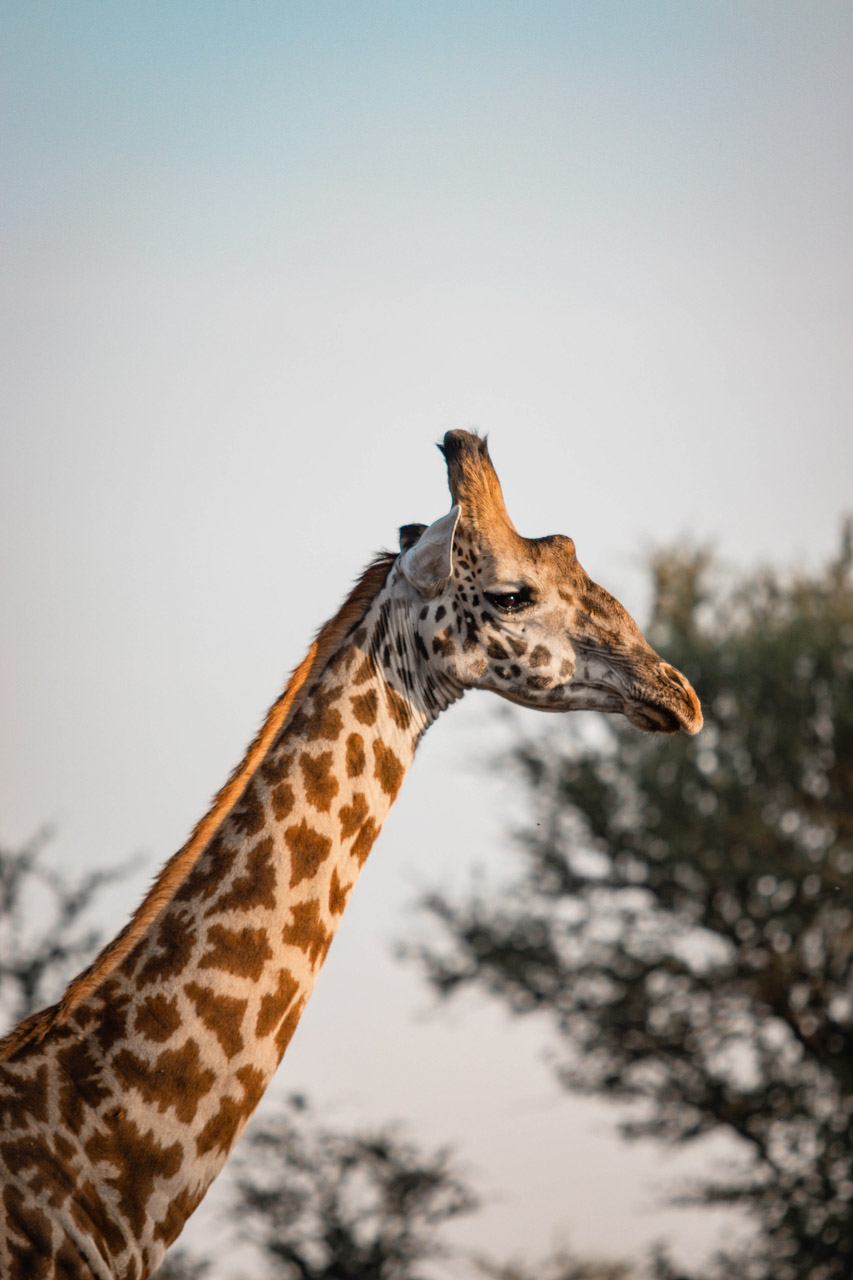
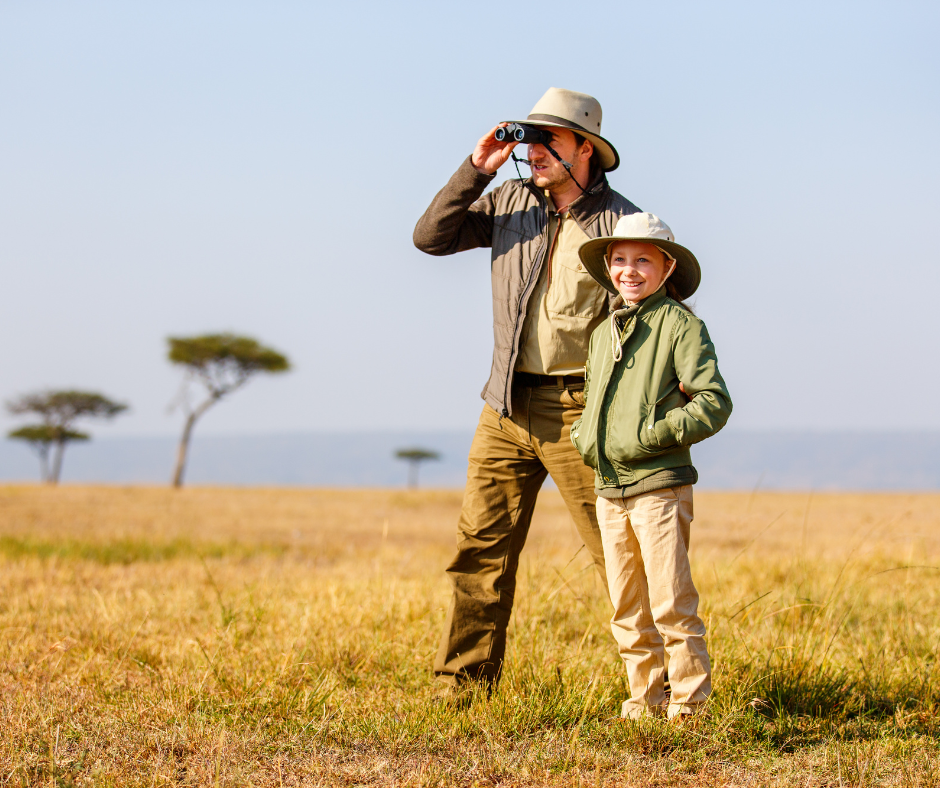
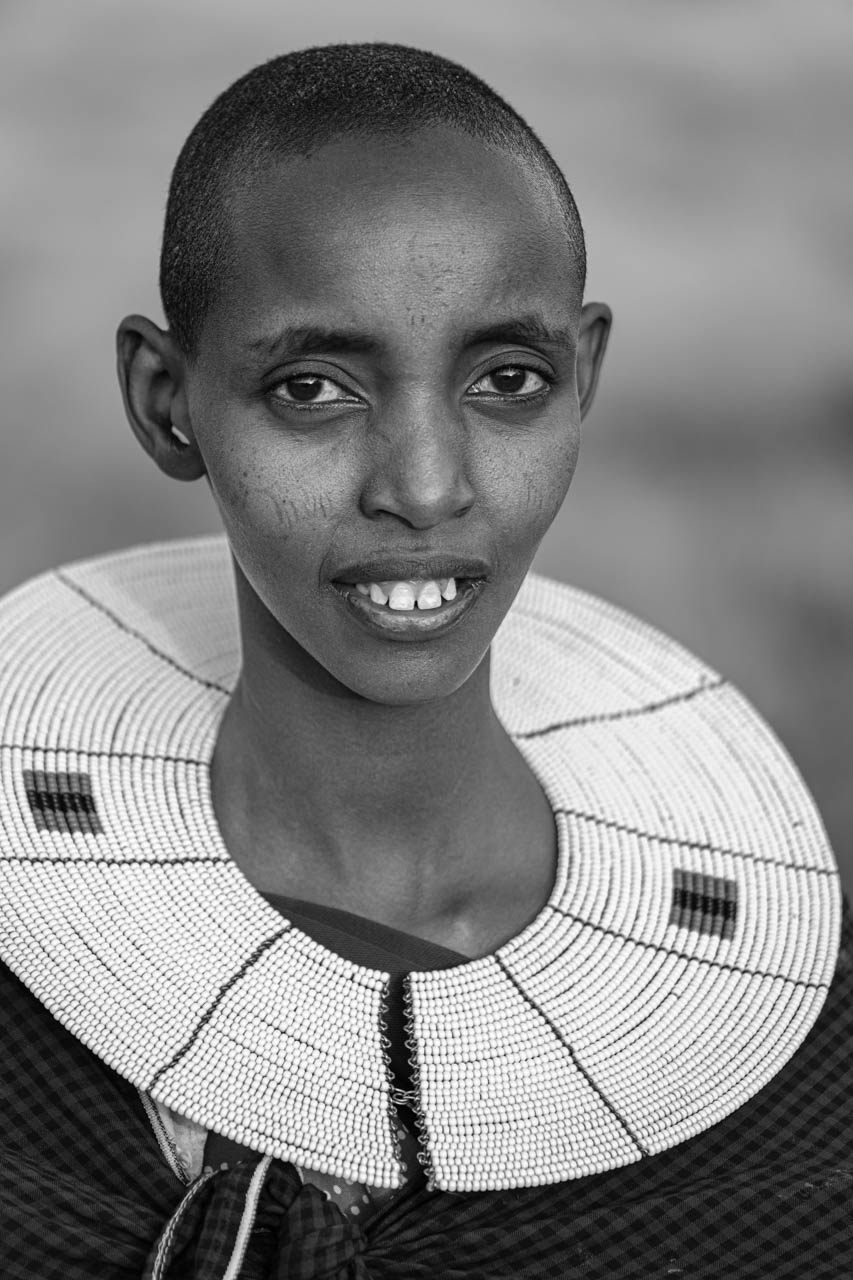
We can craft a personalized itinerary to match your interests and preferences—whether it’s a holiday for a special occasion, a stay in comfortable or luxury accommodations, or a focus on wildlife, culture, or outdoor adventures.
Booking your safari with Velam Tours & Safaris means traveling with a trusted partner who knows Tanzania inside and out. We combine local expertise, professional guides, and carefully planned itineraries to give you a smooth and memorable safari experience. With us, you don’t just see Tanzania – you feel it, through authentic encounters, comfortable stays, and personalized service that puts your needs first.
We have been receiving reviews from our served clients and We are rated 5/5 by customers. This honor is given to us by customers because we always remain committed to all our customers to do whatever is needed by them to make their safari fully satisfied.
Posted onVerified Incredible Safari Expereince We had the most incredible 7-day custom safari with Velam Safaris through the Serengeti and Northern Tanzania. From the very beginning, Adam and the entire Velam team went above and beyond to make our trip special. They carefully crafted the perfect itinerary based on our interests and desires, ensuring every detail was thought through.One of the highlights was having a professional photographer join us, capturing every moment so we could fully immerse ourselves in the experience. The team’s knowledge of the wildlife, landscapes, and local culture was outstanding, and everything about the trip felt seamless and well-coordinated.The accommodations and food throughout the journey were exceptional, making each day feel both adventurous and comfortable.We can’t recommend Velam Safaris highly enough. If you’re considering a safari in Tanzania, they will make your experience special.Posted onVerified Valence, Outstanding Safari Guide! We had the pleasure and honor of having Valence as our safari guide for seven days in Tanzania this August. This was my first safari and my husband’s fifth, and Valence was by far the most knowledgeable guide we have ever had. With over 12 years of experience, he was professional, full of energy, and always checking in on us with his friendly “Are you good?” He helped us spot an incredible range of wildlife, from zebras and giraffes to lions and cheetahs, and he seemed to know the habits of almost every plant and animal. He could even anticipate animal behavior, from predicting where a leopard would move during a hunt to finding the perfect spot for the wildebeest crossing in the Mara River. He even bought us some roasted bananas to try since we were curious about local cuisine, which made the experience feel even more authentic and special. We also ran into some car issues during the trip, which is quite common on safari, but Valence quickly identified the problem on the spot. As an experienced mechanic, he made the repairs at a nearby town without disrupting our itinerary much. Every day with him felt like a fascinating biology lesson, and thanks to Valence, our safari was both unforgettable and in the best of hands. We would highly recommend him to anyone planning a safari!Posted onVerified Best Guide - Valence: The Driver Who Made Our Tanzania Safari Unforgettable – Big Five, Perfect Views & Hakuna Matata In Tanzania, your driver is everything — guide, protector, storyteller. We were lucky to have Valence, with 12+ years of experience and a heart of gold. He showed us all the Big Five, river crossings, even lions hunting. He knew every road, avoided dust and breakdowns, and always found the perfect viewing spots. “Hakuna Matata,” he’d say, and we believed it. From day one he called us family — and treated us like it.Posted onVerified Felt like home in the midst of the jungle Being Single ladies we were taken care of so much and we felt so safe in the midst of the jungle with barely any network. Safari experience was smooth and so surprisingly magnificent.Adam who crafted our tour itinerary was in touch from day 1 till we landed back . Lolo and Lawrence our guides were nothing less than family 🙂Posted onVerified Exceptional Safari Experience! Velam Safaris delivered an outstanding safari adventure! From seamless communication to expert-guided game drives, every moment was exceptional. Luxurious accommodations, attentive staff, and a commitment to sustainability set them apart. Highly recommend for an unforgettable safari experience!Posted onVerified Unforgettable Trip - Organized by Adam This trip was absolutely incredible! A huge thanks to Adam for organizing everything so flawlessly. From the very beginning, Adam was incredibly helpful and responsive, answering all my questions and making sure everything was perfectly tailored to our interests.Posted onVerified Exceptional 5-Day Safari with Velam Safaris Velam Safaris provided an outstanding 5-day safari experience. Our knowledgeable guide made every moment memorable with incredible wildlife sightings and insightful commentary. The accommodations were luxurious, and the opportunity to connect with local communities added depth to the journey. Highly recommended for an unforgettable adventure in the heart of Africa.Posted onVerified A Fantastic Adventure with Velam Safaris: My 5-Day Tanzania Safari Review I went on a safari trip with Velam Safaris in Tanzania for 5 days, and it was amazing. Everything was well planned, and the trip was fantastic from start to finish.The best part was seeing all the animals. Our guide took us on drives through Serengeti National Park and Ngorongoro Conservation Area. We saw lions, elephants, rhinos, and many other animals in their natural homes. It was so cool to be up close to them.Our places to stay were really nice too. We stayed in comfy tents and cozy lodges. Waking up to the sounds of animals and eating tasty meals outside was so nice.What I liked most about Velam Safaris is that they care about the environment. Our guide talked about why it's important to protect nature, and I thought that was great.Overall, I had an awesome time with Velam Safaris. If you want to go on a safari in Tanzania, I definitely recommend them. Thanks, Velam Safaris, for an unforgettable adventure!Verified by TrustindexTrustindex verified badge is the Universal Symbol of Trust. Only the greatest companies can get the verified badge who has a review score above 4.5, based on customer reviews over the past 12 months. Read more